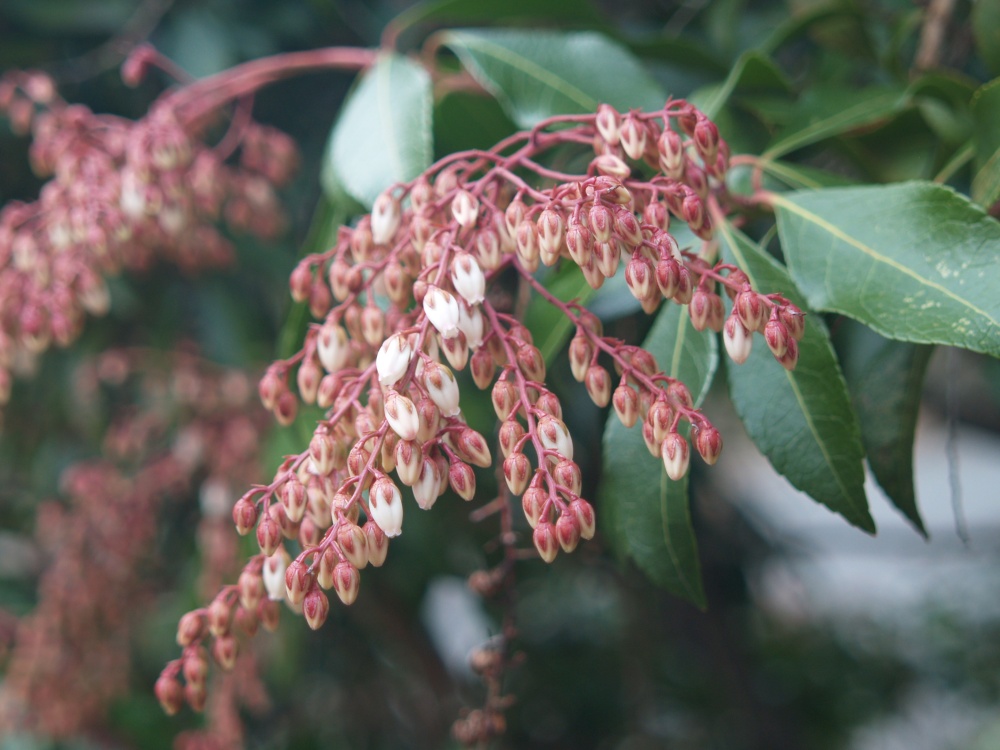A hazard of planting hellebores in March is that much of the surrounding garden remains dormant. It seems obvious that new hellebores must be planted where they can best be enjoyed when they are flowering in late winter, and this means planting along the driveway and the front walk where the garden is already quite full.

Fortunately, most of the new hellebores are in small, four inch pots, so these can easily be fit in open spaces between snowdrops and crocuses. But, inevitably there is a hosta or something in the way that is found only when I begin digging, and no doubt when perennials pop up in another several weeks there will be further conflicts. These will be easily resolved, I expect, but the result might be less favorable positioning for the splendid new hellebores.

With such difficulty I’ve decided that a dozen hellebores in larger, one gallon containers will sit on the driveway until I’ve a better idea what will come up and where. I suspect that I am not the only gardener who has so little an idea where things are planted when they’re dormant, but everything will be worked out in just a few weeks.
Nandinas, azaleas, and daphnes that are set to be planted will be going in areas with fewer conflicts. A variety of vines and toad lilies that have been mail ordered will not arrive until the second week of April, just about the time when the first signs of hostas and other dormant perennials should be more evident.
Over the weekend, I finally worked up the motivation to cut the old foliage from the dozens of established hellebores. First, in the cold of February the leathery leaves had browned considerably, and the flowers are better displayed without the old foliage. New foliage grows quickly after flowering, so there is little reason not to prune the old leaves except that this is typically done anytime from late December until just before flowering. I have difficulty enough working up the energy to prune and clean up, but when it’s cold, that’s all the reason I need to stay inside. Until this weekend, when it wasn’t warm, but it was warm enough.

When old foliage is removed on hellebores that are just about to bloom rather than taking care of this a month earlier, more care must be taken to avoid chopping out many of the flower buds. Admittedly, I’m not usually very patient, and with pruners in hand I’ve been known to chop first, ask questions later. But, I was remarkably precise this year, and only a few buds were sacrificed in my haste to get as much accomplished as possible in a few short hours of labor.

Finally, the Winter jasmine (Jasminum nudiflorum, above) has come into full bloom. I’ve bemoaned the late arrival of its flowers several times since late January, which of course did nothing at all to speed the cheerful yellow blooms along. If this rambunctious shrub typically flowered in mid and late March I would not have given it such prominence, but I expect this will be the odd year and it will get back next year to flowering in mid winter.

After a much colder than typical February anything that flowers in early spring is off to a late start, but the Pieris varieties (Pieris japonica ‘Dorothy Wycoff’, above) are not so far off schedule as others. Certainly, there are times when these begin flowering in early March, but mid month is more common. With flowers just beginning they’re only a week late, which is not really late at all.

An older, unidentified pieris (‘Snowdrift’, I think) began fading in late autumn, and while it did not decline further through the winter, it’s clear that for whatever reason it’s days are numbered. I can’t explain the impending loss, but most pieris varieties are finicky in clay soils, so I’m not going to put too much thought into it. My experience is that ‘Dorothy Wycoff’, and compact growing ‘Prelude’ and ‘Cavatine’ are most tolerant of poorly drained clay soils, and though it’s a relative newcomer, the lovely ‘Katsura’ (above) is proving quite dependable. When the dying ‘Snowdrift’ is removed, this could be an ideal spot for one of the new daphnes.